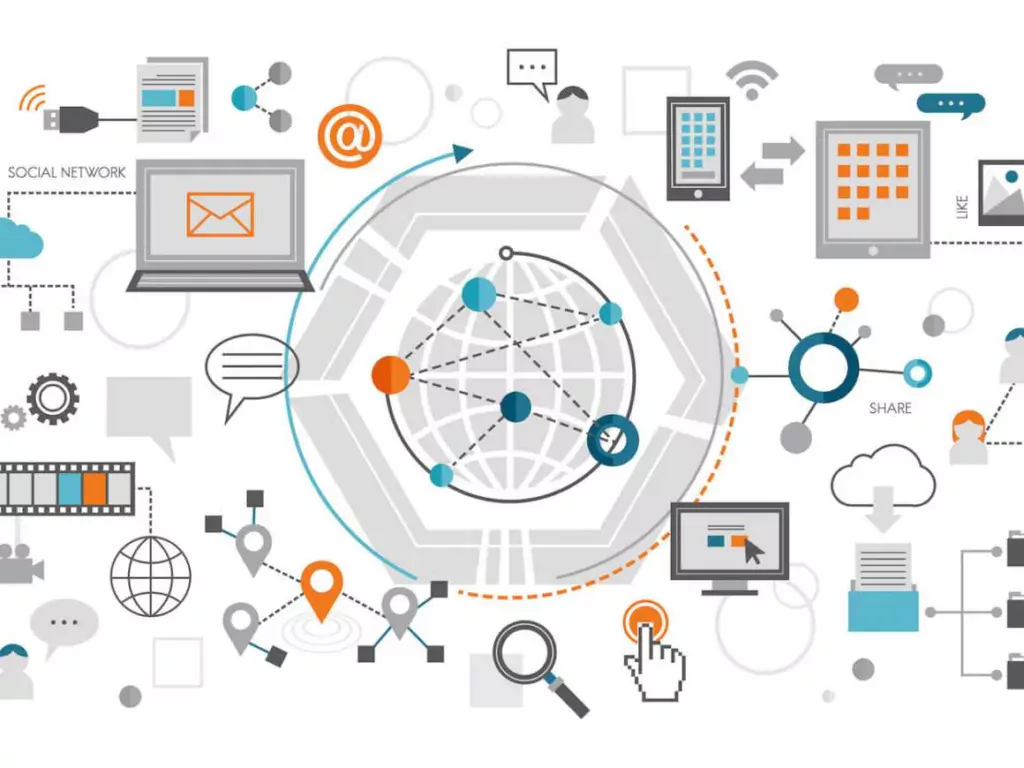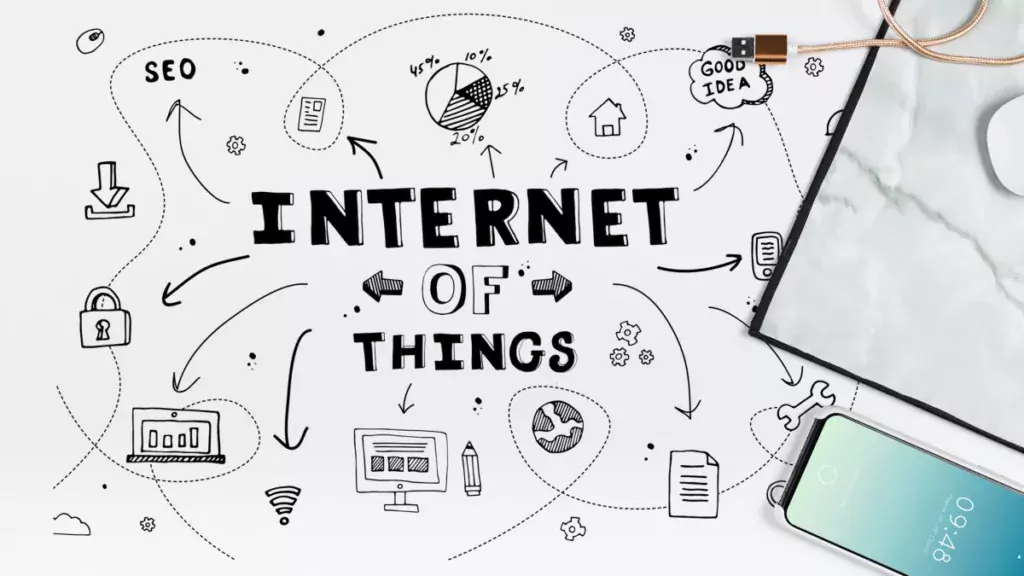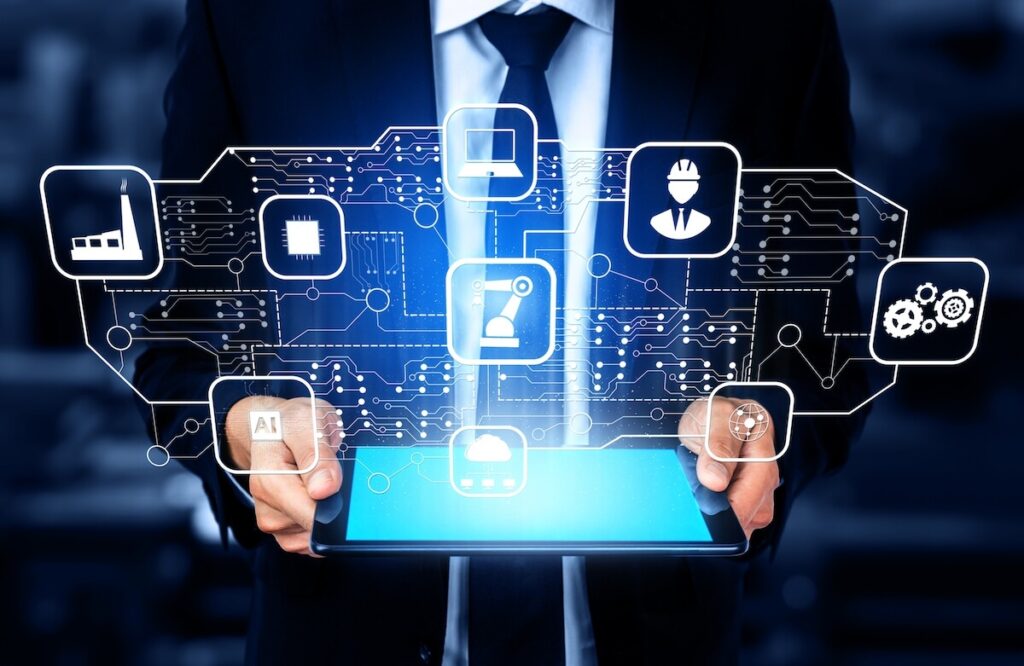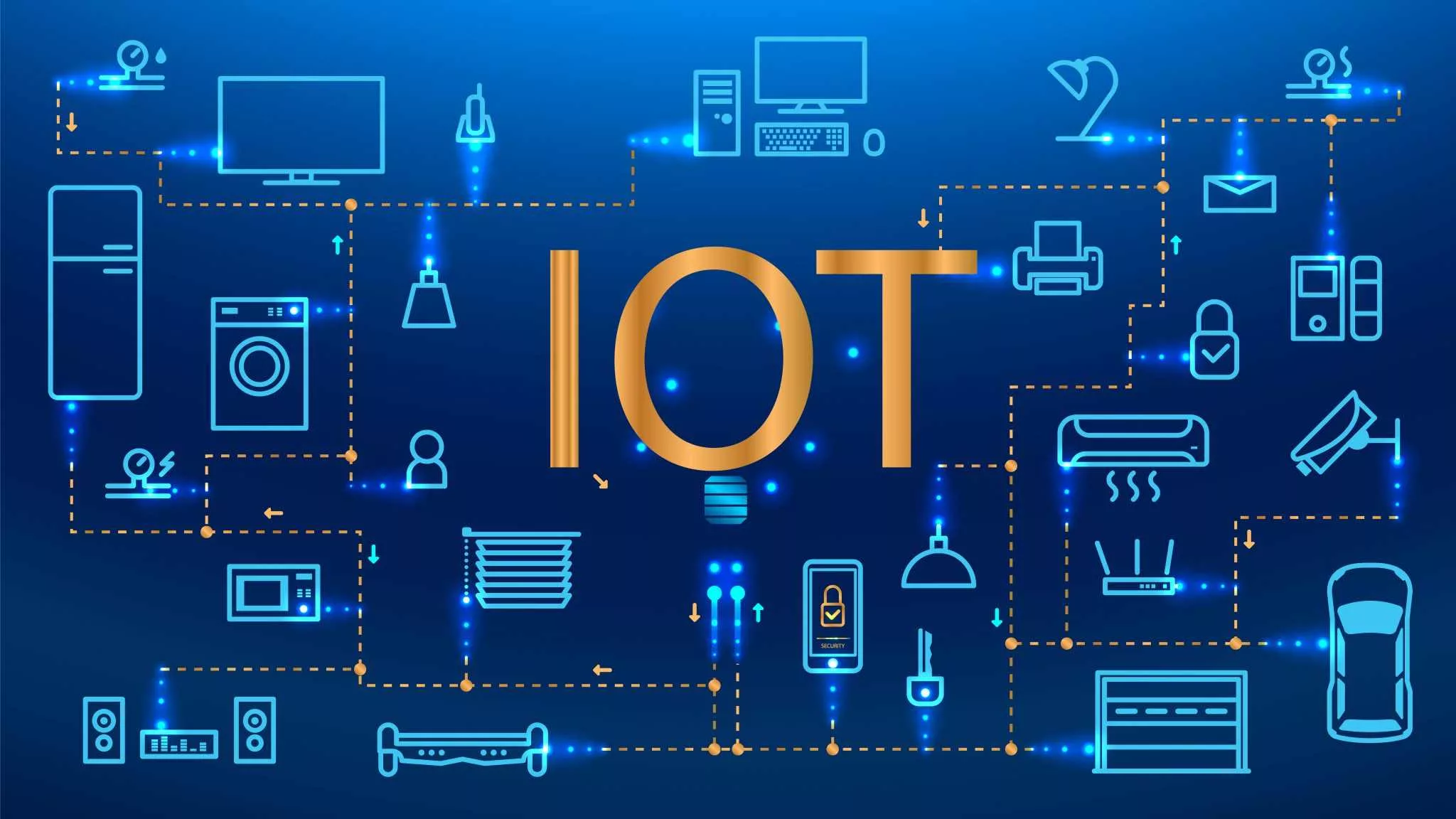Internet Of Things In Industry: What It Is And Its Industrial Applications
One of the most frequently used concepts in technology and IT in recent years, IoT or the Internet of Things in its long form, is a technology used in many different areas and sectors. Thanks to IoT, different devices exchange data with each other over the internet in a common ecosystem, enabling many different operations to operate.
IoT is also used in many different areas and functions in industrial applications. Industrial applications where IoT is used can be listed as follows:
- Various production mechanisms
- Data analysis
- Preventive maintenance
- Maintenance and cleaning processes
- Increasing efficiency in supply chain management
These studies can be given as an example for the Internet of Things in industry. IoT applications and ecosystems are used not only in technological areas but also in different industrial areas. Thanks to this technology, data exchange between machines used in different industrial processes such as production processes and supply chain processes is provided with other devices in the ecosystem.
How Is The Internet Of Things Used In Industry?

When it comes to the Internet of Things in industry, practical solutions can be seen not only in manufacturers but in all kinds of sectors. IoT technology, where devices exchange data with each other via the internet through a common ecosystem, is used in many different industrial areas. It enables the controllability of machines or equipment, their interaction with each other, and automation in supply chain processes to be managed online and digitally. Supply chain processes can be a good example for the Internet of Things in industry.
Manufacturers in many different sectors evaluate their industrial needs with IoT solutions. IoT can be used not only for companies offering products such as mobile phones, computers, and processors in the field of technology but also for industries working in different production areas such as automotive and furniture. In the supply chain management processes of a simple product or service, data exchange is managed via the Internet thanks to IoT.
What Are The Benefits Of The Internet Of Things In Industry?
Industrial companies using IoT manage operations much more efficiently than those working with traditional methods. The use of IoT in different units and needs of the industry greatly increases operational efficiency because the machines or equipment in the production process exchange data with each other online, allowing less time, energy, and resources to be spent. Many advantages can be mentioned for the Internet of Things in industry.
Maintenance processes and errors in the production line create some costs for every industrial company. However, in today’s modern world, companies that use IoT in production processes or other supply chain units both minimize production errors and possible costs in maintenance processes.
One of the most important advantages of using IoT in the industry is that supply chain processes can be recorded digitally and the transactions of all units are accessible. Therefore, in the event of a possible problem, past transactions are quickly checked and problems are detected in a shorter time and with a higher accuracy rate thanks to digital data. I can recommend that all operational units should work with IoT technology, no matter which sector you work in.
How Does The Internet Of Things Improve Industrial Efficiency?
I can claim that using IoT technology in the industry increases efficiency. There are many reasons for this. First of all, companies that continue their operations on a common ecosystem with IoT technology can develop more accurate strategies for future operations, both financially and industrially, by collecting data in real-time. Moreover, unlike traditional data recording methods, they have a faster and more error-free process.
Companies that use IoT technology in supply chain management, which includes production and distribution processes, can instantly view performance and production data thanks to the connection of machines or devices in all units. In this way, they can predict possible failures and problems in advance. This provides a more efficient production process.
What Are The Most Common Industrial Applications Of IoT?
The industrial areas where the Internet of Things technology is used the most are supply chain management processes, including units such as production automation. In addition, it is also used for industrial needs such as energy management, financial planning, and security.
Supply chain management is the process in which transfer and transfer operations from the production line to the end consumer are recorded more quickly and accurately with IoT. Another practical application that can be given as an example of the industrial use of IoT is energy management.
Many companies working in different sectors benefit from IoT tools in energy management processes. We can also talk about ensuring the efficiency of machines or devices that manage periodic expenses such as electricity, natural gas, and fuel with IoT.
How Does The Internet Of Things Help In Predictive Maintenance In Industry?

Thanks to IoT sensors, it is possible to collect operating data of different machines in different industry sectors and quickly analyze this data to report before a failure or problem occurs. In this way, more efficient operations are managed since maintenance processes are planned.
Industrial production systems operate continuously and are expensive. Reviews of system functions called “Preventive Maintenance” are performed at certain intervals. Device failures that occur for various reasons between maintenance periods can lead to major production losses. Developments in IoT technology have enabled the continuous monitoring of critical systems used in production with sensor devices and the easy detection of devices that require premature maintenance.
Such maintenance is called “Condition Based Maintenance” and extends the economic life of all systems used and prevents production losses. An application example can be given as monitoring the vibrations in the bearings of a large electric motor used in production with sensors and communicating the detected abnormalities to the responsible persons in real-time.
How Is IoT Transforming Supply Chain Management In Industry?
IoT enables the monitoring of every stage in the supply chain, including logistics and production lines, making inventory management as efficient as possible. Internet of Things technology helps logistics service providers track their customers, direct them, and deliver goods to customers.
In logistics activities equipped with the Internet of Things, the long response time in traditional logistics activities is reduced to a few days thanks to the autonomous and self-controlled movement of products from the sender to the recipient. In this way, logistics service providers gain a competitive advantage over their competitors.
Real-time computing technology equipped with the Internet of Things infrastructure allows real-time monitoring of almost every link in the supply chain, from commodity design, raw material purchasing, production, transportation, storage, distribution, processing of returns, after-sales service, and sales of semi-finished products and final products. In this way, businesses and even the entire supply chain can obtain information about products quickly, on time, and accurately to respond to complex and variable markets as soon as possible.
The need to develop and optimize to meet the demands in the field of logistics is the most important of the basic components.
Optimization based on a higher degree of automation in logistics can be achieved more easily by providing and sharing relevant information through the Internet of Things systems, creating a Logistics 4.0 connected logistics network level. Optimization of both outbound and inbound logistics can be defined through intelligent software integrated into software and databases. This software provides information exchange about systems to achieve a higher degree of automation via the Internet. For example, it is possible to improve logistics scheduling by connecting global positioning system mapping systems to enterprise resource planning systems. In addition, this use will lead to transparency, improved decision-maker efficiency, increased transportation capacity, transportation optimization in urban areas, automatic exception reports, dynamic product routing, and online decision support for transportation.
What Are The Security Challenges Of Using The Internet Of Things In Industry?
IoT devices may contain some security vulnerabilities, unlike traditional methods. There are many nodes in a system consisting of various smart devices and communication protocols. When a single node in the IoT network is attacked, the IoT system may be paralyzed, resulting in problems such as data loss and loss of certain functions of the IoT system.
One of the best ways for logistics service providers to solve this problem is to improve the reliability of the IoT network. The security vulnerabilities related to the IoT, which are proportional to the exponential increase in IoT devices and applications, are growing rapidly. Failure to implement appropriate security measures has led to negative consequences such as reputational and financial penalties for some IoT manufacturers and service providers.
Therefore, security has become very important to protect IoT devices and applications from cyber attacks in both small and large-scale networks consisting of physical and virtual infrastructures. Approaches developed to solve security problems related to digital technologies can also be used in the logistics field, and in this way, it will be possible to benefit from technology to eliminate problems as much as possible.
How Can IoT Optimize Energy Consumption In Industrial Settings?
The Internet of Things enables the monitoring of energy production and consumption not only by companies or individuals but also by city networks. Networks equipped with smart systems determine the source of energy to be distributed according to the incoming demand and reduce the costs of energy use by using the most economical source.
For example; An electrical switch may send a message to the factory manager; “If precautions are not taken, a large fine may be imposed on the electricity bill due to unnecessary energy use.” We do not stop at such small incidents. We can also think of the huge dimensions of this incident. We can also integrate IoT technology into wind turbines.
Thanks to the sensors and collected data, it is possible to see which turbine should operate and when. This both extends the life of the turbines and prevents energy waste. Sometimes, when there is not enough wind, the energy spent for the operation of the turbine can be more than the energy produced. Many factors such as weather reports, the location of the turbine, and the strength of the blowing wind are effective in the decision to operate the turbine. This is just one example, of course.
IoT can play a key role in solving global issues. Aiming for savings, high availability of computing power, and low storage costs can minimize large-scale pollution such as global warming in more innovative ways.
What Are The Key Technologies Driving The Internet Of Things In Industry?

Maximum efficiency is achieved when different technologies and the Internet of Things in industry are used together. From sensors to cloud computing solutions, from big data analytics tools to 5G and artificial intelligence solutions, many key technologies can be considered tools supporting industrial uses of the Internet of Things. Devices called the Internet of Things (IoT) are devices that collect data about heat, movement, image, smell, smoke, liquid, color, and other qualities from the environment they are in thanks to the sensors they contain in their structure and transmit this data to each other or the server through Internet access and communicate and interact with themselves and the server.
The concept of the Internet of Things; includes situations where network connection and computing capacity are expanded to objects, sensors, and everyday items that exchange data with very little human intervention, and its basis is to build, operate, and manage the physical world through widespread intelligent networking, data collection, predictive analysis, deep optimization, machine-to-machine methods and other solutions. Thus, the Internet of Things technology transforms traditional objects into their smart counterparts.
Recent developments in information and communication technologies such as the Internet of Things and Cyber-Physical Systems enable the development of smarter and more predictive healthcare solutions both in daily life (home/office) and in hospitals. The Internet of Things has the potential to provide the rise of many medical applications in the field of health, such as remote health monitoring, fitness programs, chronic diseases and elderly care, and compliance with treatment and medication by home healthcare providers is another important potential application of the Internet of Things in the field of health.
Remote health monitoring with the Internet of Things technology can be used to monitor non-critical patients at home instead of in the hospital, thus reducing the burden on resources such as doctors and hospital beds. It is expected that Internet of Things-based healthcare services will reduce costs, increase quality of life, and enrich the user experience. It has also been stated that there is an urgent need for a real-time health monitoring infrastructure that analyzes patients’ healthcare data to avoid preventable deaths due to the increasing number of elderly and disabled people. This indicates that the Internet of Things in industry technology will be used more intensively in the field of health in the coming years.
How Does IoT Enable Real-Time Monitoring And Data Analysis In Industrial Operations?
When it comes to the Internet of Things in industry, one of the first technologies that comes to mind is data analysis. One of the most common units where the Internet of Things in industry applications is seen is the real-time data collection and analysis processes. In many different sectors, data does not only consist of customer data but also includes transactions in the supply chain process. When this data is recorded with IoT technology, it can be inspected instantly and recorded without errors compared to traditional methods.
For example, the maintenance and performance of every device or machine in a production line can be managed with the internet of Things in industry applications. In this way, possible failures or problems are detected in advance. In addition, the ease of analysis of larger data with artificial intelligence tools makes it possible to use IoT technologies more efficiently. In the near future, Internet of Things in industry solutions and tools will increase.
See you in the next post,
Anil UZUN
